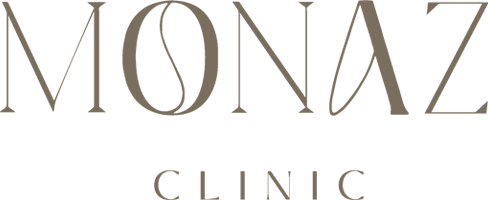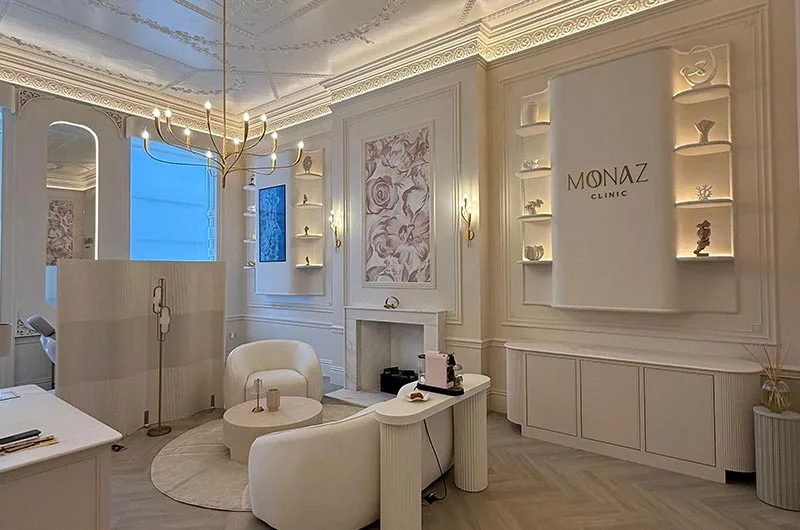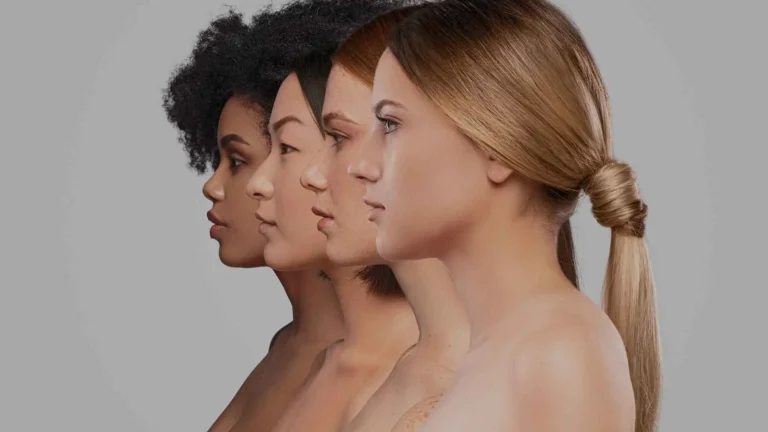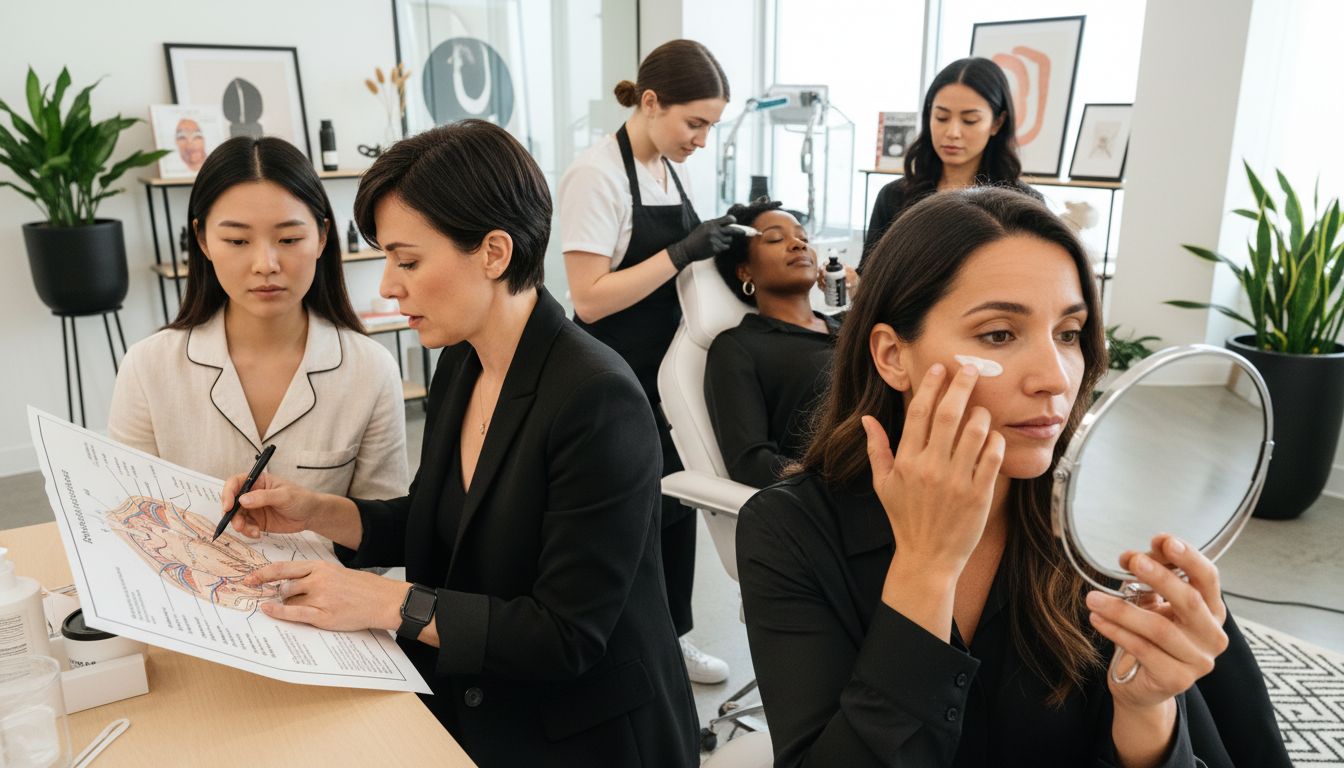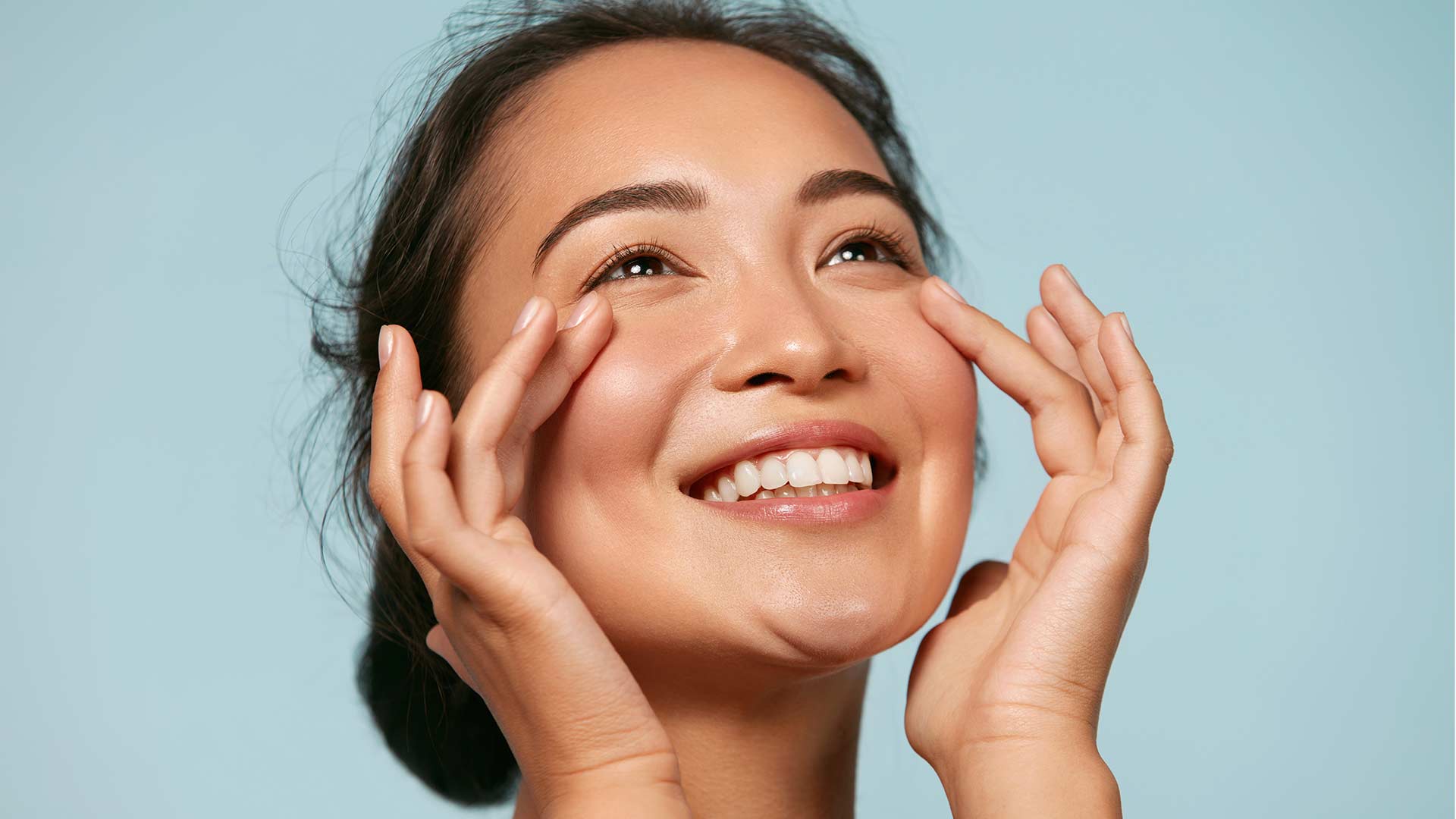Facial contouring guide covering non-surgical options, treatment process, benefits, costs, and safety for women in London. Expert advice included.
Over 900,000 non-surgical cosmetic treatments are performed each year in the UK, reflecting a strong desire for subtle facial enhancements without surgery. People seek ways to reshape cheekbones or define jawlines while avoiding lengthy recovery. Facial contouring stands out as a safe, medical-grade option guided by expert practitioners. This guide reveals how precise injectable treatments deliver balanced facial features and lasting, natural-looking results.
Key Takeaways
| Point | Details |
|---|---|
| Non-Surgical Procedure | Facial contouring is a non-invasive treatment using injectables to enhance and define facial features with professional oversight. |
| Qualified Practitioners Required | Treatments must be performed by licensed professionals due to safety and regulatory standards. |
| Natural Enhancements | The goal is to achieve subtle, natural-looking results rather than dramatic transformations. |
| Longevity of Results | Effects vary by treatment type, lasting from 3 to 18 months depending on individual factors. |
Table of Contents
- Defining Facial Contouring And Key Concepts
- Non-Surgical Facial Contouring Treatments
- Treatment Process And Typical Techniques
- Expected Results And Longevity
- Risks, Safety Guidelines, And Costs
Defining Facial Contouring and Key Concepts
Facial contouring is a sophisticated non-surgical aesthetic procedure designed to enhance and reshape facial features without invasive surgical intervention. This innovative technique focuses on strategically using injectable treatments to sculpt, define, and harmonise facial structures, creating a more balanced and refined appearance.
According to UK government classifications, facial contouring falls under the amber risk category – a medium-complexity cosmetic procedure requiring professional medical oversight. Our guide on facial volume loss provides deeper insights into how these treatments work. The primary methods involve precise application of dermal fillers and other injectable treatments to:
- Enhance cheekbone definition
- Sharpen jawline contours
- Restore facial volume
- Balance asymmetrical features
- Create subtle, natural-looking improvements
Non-surgical cosmetic procedures like facial contouring represent a nuanced approach to aesthetic enhancement. As research from government health consultations indicates, these treatments must be performed by licensed practitioners meeting stringent professional standards.
 The goal is not dramatic transformation, but refined, personalised refinement that celebrates individual facial characteristics while addressing specific aesthetic concerns.
The goal is not dramatic transformation, but refined, personalised refinement that celebrates individual facial characteristics while addressing specific aesthetic concerns.
Non-Surgical Facial Contouring Treatments
Non-surgical facial contouring represents a modern approach to aesthetic enhancement, offering sophisticated treatments that reshape and refine facial features without invasive surgical procedures. According to research from Bupa, these treatments typically include anti-wrinkle injections, dermal fillers, chemical peels, and microneedling techniques that provide targeted facial refinement.
Discover our top non-invasive treatments for a comprehensive understanding of facial aesthetic options. The primary treatments in this category include:
Here’s a comparison of the primary non-surgical facial contouring treatments:
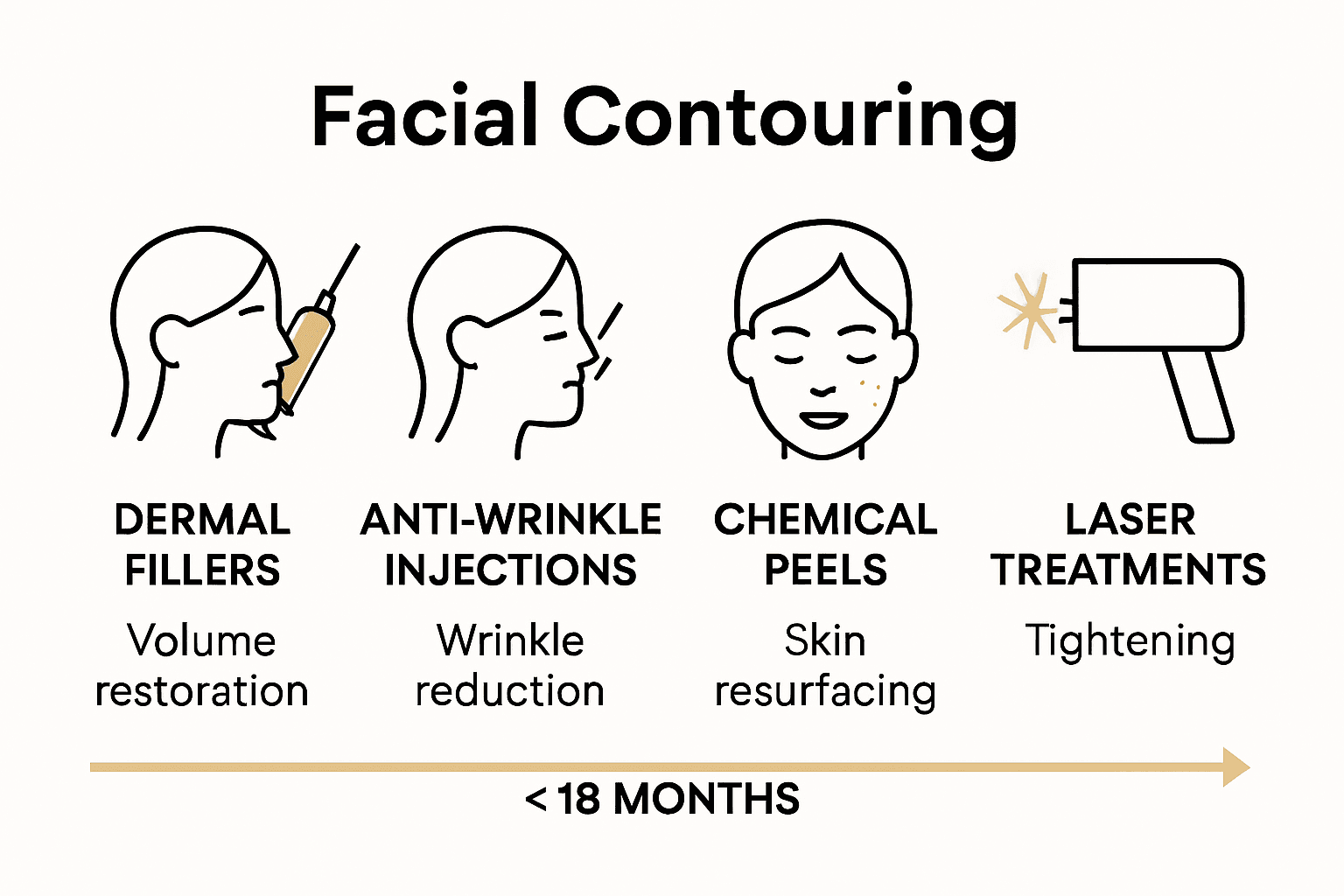
| Treatment Type | Main Purpose | Typical Duration |
|---|---|---|
| Dermal Fillers | Restore volume Contour enhancement | 9-18 months |
| Anti-wrinkle Injections | Reduce wrinkles Muscle relaxation | 3-6 months |
| Chemical Peels | Improve skin texture Enhance tone | Varies (weeks-months) |
| Laser Treatments | Skin resurfacing Rejuvenation | Months |
- Botulinum toxin injections: Precise muscle relaxation to reduce wrinkles
- Dermal fillers: Volume restoration and contour enhancement
- Chemical peels: Skin texture and tone improvement
- Laser treatments: Targeted skin resurfacing and rejuvenation
As reported by UK parliamentary research, these treatments are widely used in the aesthetic sector but are increasingly subject to regulatory scrutiny. Prescription-only treatments like Botox must be administered by regulated medical professionals, highlighting the importance of selecting a qualified, experienced practitioner. The goal is not dramatic transformation, but subtle, natural-looking enhancements that harmonise and celebrate individual facial features.
Treatment Process and Typical Techniques
Facial contouring treatment is a meticulous process designed to enhance facial features with precision and care. According to clinics specialising in aesthetic procedures, the typical treatment involves a comprehensive consultation followed by targeted injectable techniques that restore volume and define facial contours.
Learn about our inspiring contouring techniques to understand the nuanced approach. The standard treatment process typically follows these key stages:
- Initial comprehensive consultation
- Facial mapping and assessment
- Topical numbing preparation
- Precise injectable placement
- Immediate post-treatment evaluation
As outlined in the UK government’s proposed licensing framework, these procedures are categorised as amber risk treatments, requiring careful administration by trained healthcare professionals. Hyaluronic acid dermal fillers are strategically injected into specific facial zones including:
- Cheeks for volume restoration
- Chin for structural definition
- Jawline for enhanced contour
- Lips for subtle enhancement
Most patients experience immediate visible results, with full treatment effects developing over approximately two weeks. The goal remains creating natural, harmonious facial improvements that celebrate individual aesthetic characteristics while maintaining professional medical standards.
Expected Results and Longevity
Facial contouring results offer transformative yet subtle aesthetic improvements that evolve over time. According to research from aesthetic clinics, patients can expect immediate visible changes with full refinement developing within approximately two weeks after treatment.
Explore our jawline contouring tips for insights into maintaining optimal results. The typical longevity of facial contouring treatments varies based on several key factors:
- Dermal Fillers: 9-18 months duration
- Anti-wrinkle Injections: 3-6 months effectiveness
- Individual Metabolism: Faster metabolic rates may reduce treatment longevity
- Lifestyle Factors: UV exposure, smoking, and exercise impact results
According to Bupa’s medical insights, these treatments require prescription oversight and must be administered by qualified practitioners to ensure safety and efficacy. The outcomes are designed to create natural-looking enhancements that harmonise with individual facial characteristics, rather than dramatic transformations. Patients can expect progressive improvements that subtly refine facial contours, restore volume, and celebrate their unique aesthetic potential.
Risks, Safety Guidelines, and Costs
Facial contouring treatments require careful consideration of safety protocols and potential risks. According to the UK government’s proposed licensing framework, these procedures are categorised with specific safety guidelines to protect patient well-being and ensure professional standards of care.
Check our comprehensive non-invasive treatment options for a deeper understanding of safety measures. Key safety considerations include:
- Practitioner Qualification: Must be medically regulated professionals
- Minimum Age Requirement: 18 years and older
- Infection Control: Strict hygiene and sterilisation standards
- Informed Consent: Detailed consultation and risk disclosure
Potential risks associated with facial contouring treatments can include:
- Temporary bruising or swelling
- Potential allergic reactions
- Asymmetrical results
- Rare instances of infection
As reported by Bupa, treatments like Botox and dermal fillers currently require prescription oversight, with the UK government actively working towards more comprehensive regulation. Costs typically range from £200-£800 per treatment, varying based on the specific technique, area treated, and practitioner expertise. The ultimate goal remains delivering safe, professional aesthetic enhancements that prioritise patient safety and natural-looking results.
Ready to Experience Safe, Subtle Facial Contouring in London?
Are you seeking precise facial contouring that respects your natural beauty while addressing concerns like loss of volume, skin laxity, or uneven facial proportions? The article highlighted the importance of medically supervised non-surgical facial enhancements, as well as the anxiety many feel about finding a trustworthy, expert-led clinic that delivers subtle, long-lasting results. At Monaz Clinic, our team exclusively serves women with a personalised approach rooted in safety and artistry. For further tips on how to improve your results and maintain a natural look, visit our facial aesthetic tips section, where you will find helpful advice tailored to your needs.
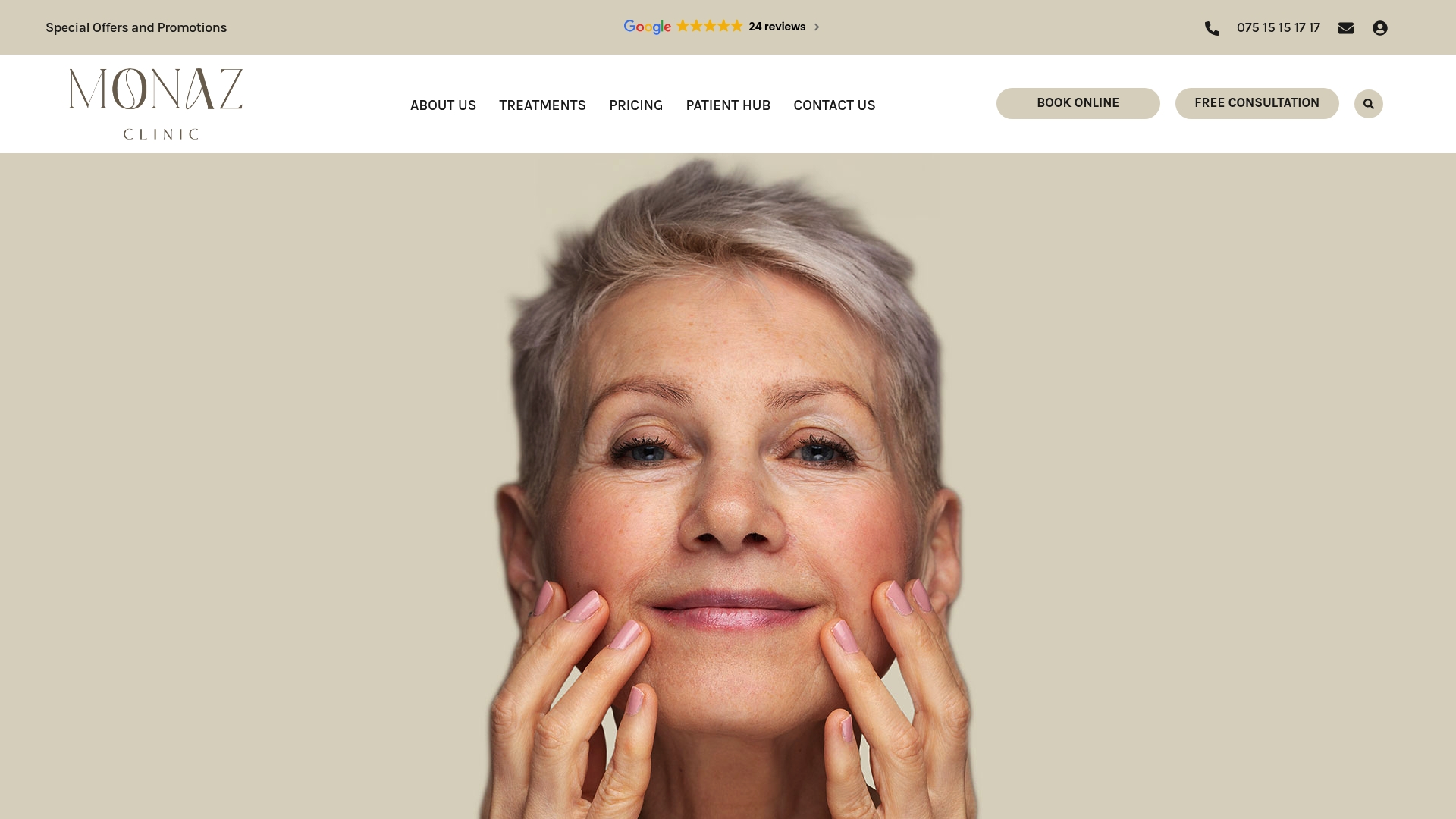
Step into a clinic that blends medical heritage, expertise, and a gentle touch. Book a complimentary consultation with our Harley Street specialists today and discover why so many women value our professional care. You deserve to feel confident about every step of your treatment. Act now and learn more at Monaz Clinic for facial contouring that celebrates your unique features.
Frequently Asked Questions
What is facial contouring?
Facial contouring is a non-surgical aesthetic procedure that enhances and reshapes facial features using injectable treatments to create a more balanced and refined appearance.
How long do the results of facial contouring treatments last?
The longevity of facial contouring treatments varies; dermal fillers typically last 9-18 months, while anti-wrinkle injections last 3-6 months, with individual metabolism and lifestyle factors influencing duration.
What are the common methods used in non-surgical facial contouring?
Common methods include dermal fillers for volume restoration, anti-wrinkle injections for muscle relaxation, chemical peels for skin texture improvement, and laser treatments for skin rejuvenation.
What are the risks associated with facial contouring?
Potential risks include temporary bruising, swelling, allergic reactions, asymmetrical results, and very rare instances of infection. It’s crucial that treatments are performed by qualified professionals to mitigate these risks.
Recommended
- 7 Inspiring Examples of Facial Contouring Techniques – Monaz Clinic London
- 7 Jawline Contouring Tips for a Defined Look – Monaz Clinic London
- Understanding Safe Cosmetic Treatments for Facial Aesthetics – Monaz Clinic London
- Understanding What Are Facial Fillers and Their Benefits – Monaz Clinic London
